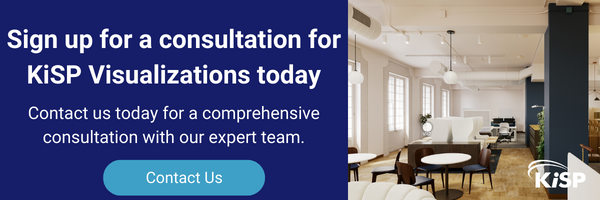In the fast-paced world of hospitality furniture sales, staying ahead of the competition requires innovative approaches. Virtual Reality (VR) and Augmented Reality (AR) technologies are revolutionizing the hospitality design process, making it easier for non-architects to visualize and facilitate better communication and decision-making during early-stage meetings. By leveraging these advanced tools in your hospitality furniture presentation, you can create a more immersive and compelling experience for your clients, ultimately helping you close more deals.
Benefits of VR and AR in Hospitality Furniture Presentation
Integrating VR and AR into your hospitality furniture presentation offers numerous advantages:
- Enhanced Visualization: VR and AR allow clients to experience a virtual walkthrough of hospitality spaces. This immersive experience helps clients understand how your furniture will look and feel in the actual environment, bridging the gap between imagination and reality.
- Improved Communication: These technologies provide a common visual language that can be easily understood by all stakeholders, regardless of their design background. This leads to more effective communication and reduces the risk of misunderstandings.
- Faster Decision-Making: Clients can make more informed decisions quickly by visualizing different furniture configurations and styles in a virtual space. This accelerates the approval process and shortens the sales cycle.
- Cost-Effective Revisions: VR and AR enable clients to make changes to the design without incurring the costs associated with physical prototypes. This flexibility allows for efficient iterations based on client feedback (LeadSquared) (DealHub).

Some Ideas for using VR/AR in Hospitality Furniture Presentations
Several hospitality projects have successfully utilized VR and AR technologies to enhance their design presentations and sales processes:
- Hotel Lobby Redesign: VR has been used by hotel chains to present new lobby designs to stakeholders. This immersive experience allows decision-makers to virtually walk through the space, providing a clear understanding of the design, which facilitates faster approvals.
- Restaurant Renovation: High-end restaurants have utilized AR to showcase different seating arrangements and interior design options. This technology enables clients to view proposed changes through their smartphones, making it easier to visualize the end result and choose the best layout.
- Guest Room Upgrades: Boutique hotels have used VR to present multiple guest room designs to potential investors. The virtual walkthroughs help investors visualize the impact of the proposed upgrades, leading to quicker investment decisions.

Future Trends in VR/AR for the Hospitality Industry
The use of VR and AR in hospitality furniture presentations is expected to grow, with several trends emerging:
- Increased Adoption of AR Apps: As AR technology becomes more accessible, we can expect to see a rise in AR apps specifically designed for the hospitality industry. These apps will allow clients to visualize furniture in their spaces using their smartphones or tablets.
- Integration with AI: Combining VR and AR with artificial intelligence (AI) will enable more personalized and data-driven design experiences. AI can analyze client preferences and provide customized furniture recommendations in real-time.
- Collaborative VR Spaces: VR platforms will continue to evolve, offering more collaborative features that allow multiple stakeholders to interact and provide feedback in a shared virtual space, regardless of their physical location.
- Sustainability Focus: VR and AR can support sustainable design practices by reducing the need for physical prototypes and minimizing waste. This aligns with the growing emphasis on sustainability in the hospitality industry .
Conclusion
Incorporating VR and AR into your hospitality furniture presentations can significantly enhance your sales process. These technologies provide a powerful visual tool that helps non-architects understand design concepts, improves communication, and accelerates decision-making. By staying ahead of future trends and leveraging the benefits of VR and AR, you can create more compelling presentations, shorten your sales cycle, and stand out in the competitive hospitality furniture market.



